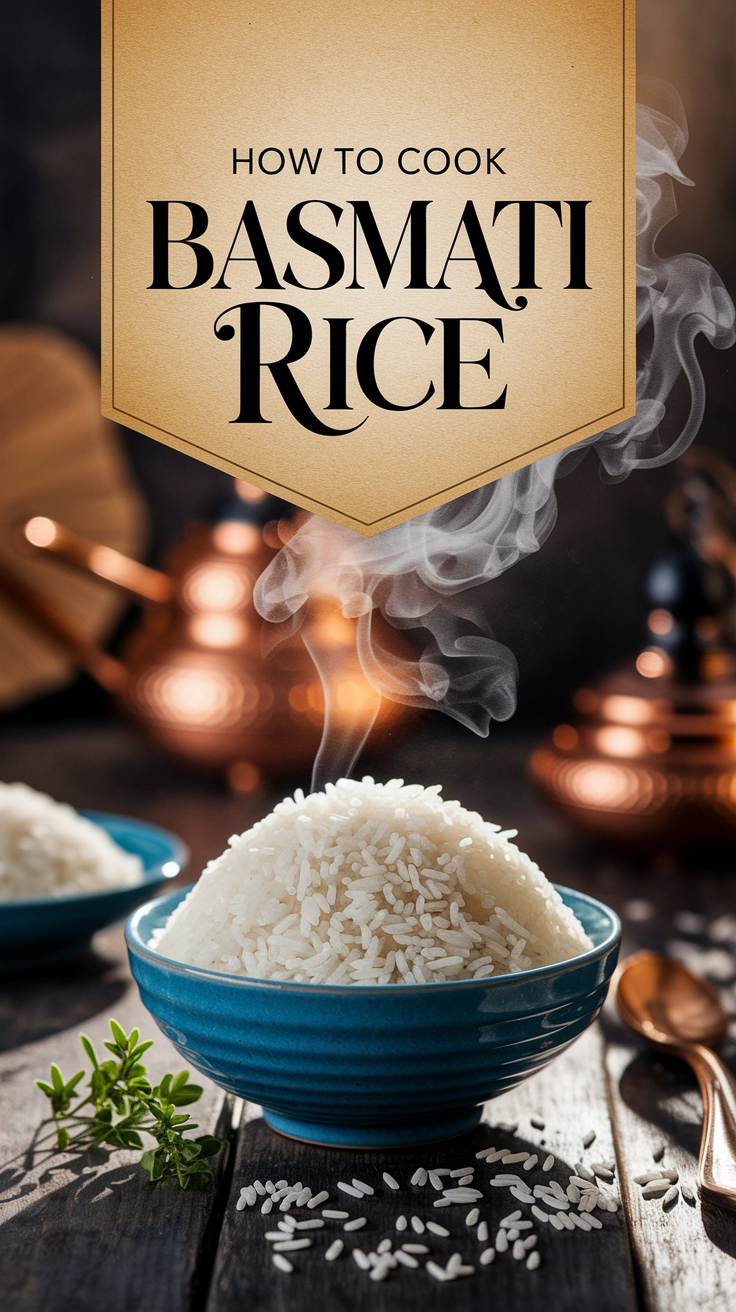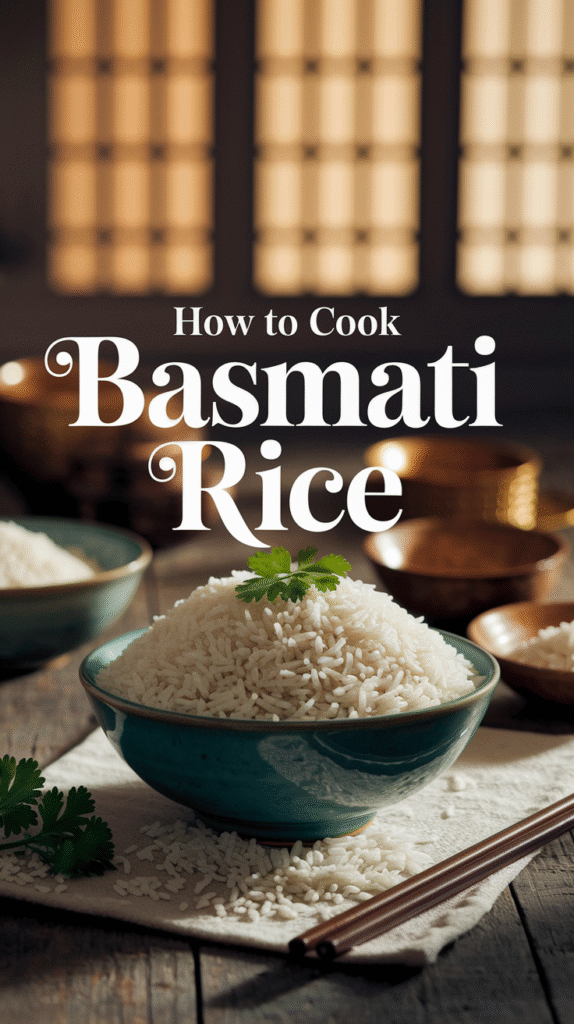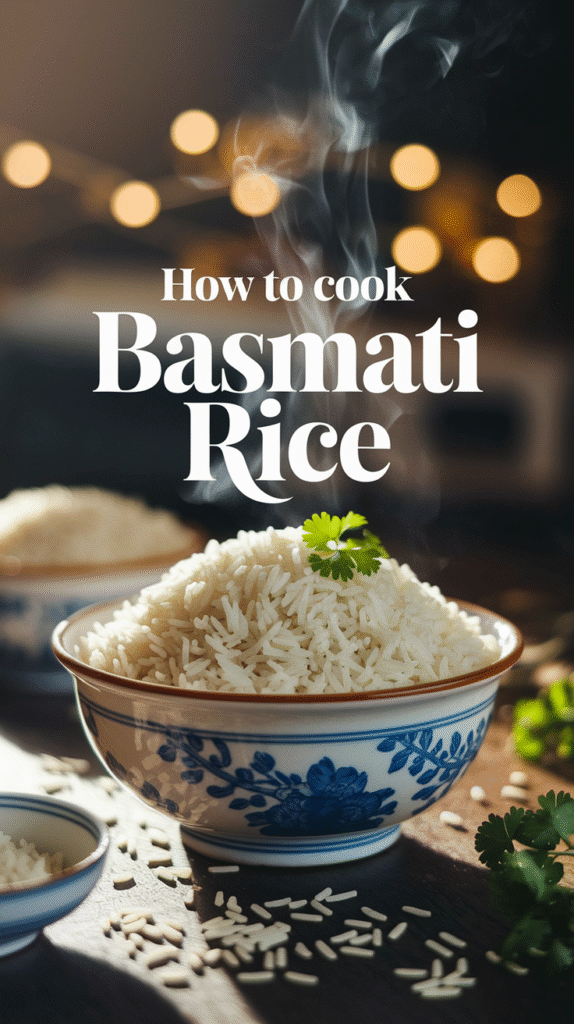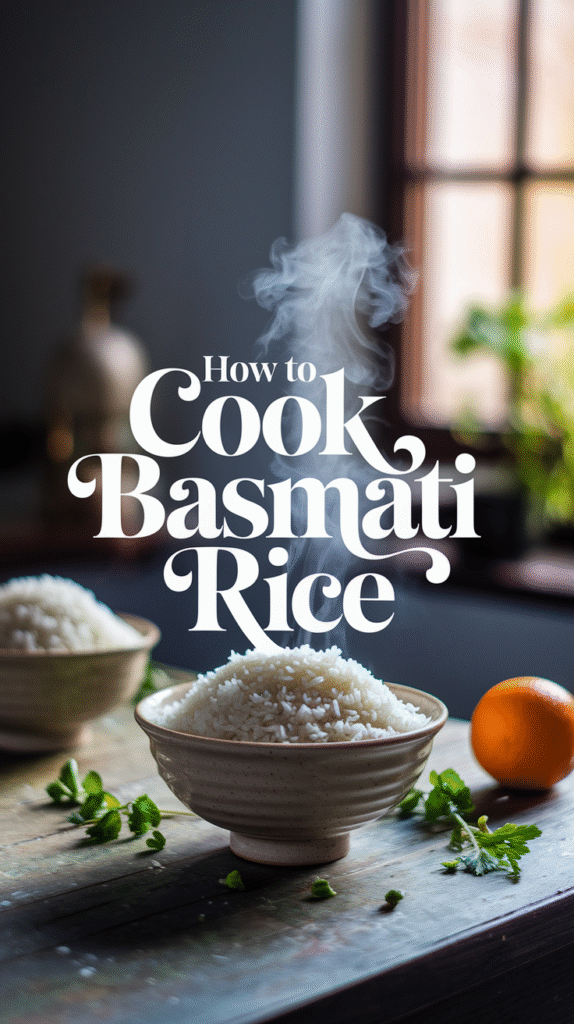Cooking basmati rice might seem like a simple task, but mastering it can elevate your culinary skills to new heights. Known for its fragrant aroma and fluffy texture, basmati rice is a staple in many cuisines, particularly Indian and Middle Eastern. To get the perfect consistency and flavor, it’s essential to follow some straightforward steps. Let’s dive into the art of cooking basmati rice.
Choosing the Right Basmati Rice
Not all basmati rice is created equal. When choosing basmati rice, look for the following characteristics:
- Long Grain: Authentic basmati rice has long, slender grains.
- Aromatic: A rich, nutty aroma is a hallmark of quality basmati.
- Non-Sticky: The rice should remain separate when cooked, not clump together.
Brands like Zaroori Basmati and Tilda offer great options. Choose one that appeals to your taste preferences.
Prepping the Rice
The first step in cooking basmati rice is to rinse it properly. This is important for achieving the ideal texture. Here’s how to prep your rice:
- Measure: Take one cup of basmati rice for about two servings.
- Rinse: Place the rice in a fine-mesh strainer and rinse it under cold water. Gently rub the grains with your fingers to remove excess starch.
- Soak: Soak the rice in water for at least 30 minutes. This helps the grains absorb water and cook evenly.
Cooking Basmati Rice
Once the rice is prepped, it’s time to cook it. Follow these steps for perfectly cooked basmati rice:
- Water Ratio: Use a water-to-rice ratio of 1.5:1. For one cup of rice, you’ll need 1.5 cups of water.
- Boil: In a pot, bring water to a rolling boil. Add a pinch of salt for flavor.
- Add Rice: Gently add the soaked and drained rice to the boiling water.
- Simmer: Reduce the heat to low and cover the pot with a tight-fitting lid. Allow it to simmer for about 15-20 minutes.
- Rest: Once the time is up, turn off the heat and let the rice sit for an additional 10 minutes, still covered. This step is crucial for fluffy rice.
- Fluff: use a fork to fluff the rice gently before serving.
Common Mistakes to Avoid
Even seasoned cooks can make mistakes when cooking basmati rice. Here are some common pitfalls to watch out for:
- Skipping the rinsing and soaking process can lead to gummy rice.
- Using too much water will make the rice mushy.
- Not allowing the rice to rest post-cooking may result in clumping.
Flavoring Options
Basmati rice can be served plain or flavored. Here are some ways to enhance its taste:
- Saffron: Soak a few strands in warm water and add to the cooking rice for a rich flavor and color.
- Spices: Add whole spices like cardamom, cloves, or cumin seeds to the cooking water to infuse flavor.
- Vegetables: Toss in peas, carrots, or bell peppers for a colorful and nutritious mix.
Pairing Basmati Rice with Dishes
Basmati rice is incredibly versatile and pairs well with a variety of dishes. Consider serving it with:
- Curry: Chicken, lamb, or vegetable curries complement basmati rice wonderfully.
- Grilled Meats: Skewers of grilled chicken or lamb work great for a hearty meal.
- Salads: Mix cold basmati rice with vegetables and a dressing for a refreshing salad.
Mastering the technique of cooking basmati rice can fundamentally change your meals. With practice, you’ll be able to whip up this fluffy, aromatic side dish effortlessly. For more information, recipes, and tips, visit BBC Good Food.
Different Methods to Cook Perfect Basmati Rice
Basmati rice is known for its distinct flavor and fluffy texture, making it a favorite for many dishes around the world. Cooking perfect basmati rice requires precision, but with the right methods, you can achieve delicious results. Here are various techniques to cook basmati rice to perfection, ensuring every grain is separate and flavorful.
Soaking Method
Soaking basmati rice before cooking helps to enhance its texture. This method allows the grains to absorb water, reducing the cooking time and ensuring they remain separate.
Steps to follow:
- Measure the desired amount of basmati rice.
- Rinse the rice under cold water until the water runs clear. This helps in removing excess starch.
- Soak the rice in enough water for at least 30 minutes.
- Drain the soaked rice and set it aside.
- In a pot, add water at a ratio of 1:1.5 (rice to water). Bring it to a boil.
- Add the drained rice and let it boil for 2-3 minutes.
- Reduce the heat to low, cover the pot, and let it simmer for 15-20 minutes.
- Once cooked, turn off the heat and let it rest for 5 minutes before fluffing with a fork.
Absorption Method
This classic method involves cooking the rice by absorbing all the water, resulting in light and fluffy grains.
Follow these steps for best results:
- Rinse the basmati rice until the water runs clear.
- Use a ratio of 1:2 (rice to water). For example, 1 cup of rice requires 2 cups of water.
- Combine the rinsed rice and water in a pot and add a pinch of salt for flavor.
- Bring the mixture to a boil over medium heat.
- Once boiling, reduce the heat to low and cover tightly.
- Let it simmer for about 15-20 minutes without lifting the lid.
- Remove from heat and let it rest for 5 minutes before fluffing.
Steaming Method
Steaming basmati rice allows for an even gentler cooking process, preserving the natural aroma and flavor of the rice.
Here’s how to steam basmati rice:
- Soak the rice for at least 30 minutes, then rinse and drain.
- Set up a steamer or a pot with a steaming rack.
- Add water to the pot, ensuring it doesn’t touch the rice.
- Place the soaked and drained rice in the steaming basket.
- Cover and steam for about 20-25 minutes.
- Fluff after steaming and let it rest for a few minutes before serving.
Pressure Cooker Method
Using a pressure cooker can significantly cut down cooking time while ensuring tender and fluffy rice.
- Rinse and soak the basmati rice for 20-30 minutes.
- Add the soaked rice to the pressure cooker along with water at a ratio of 1:1.25.
- Add salt to taste and a teaspoon of oil or butter if desired.
- Seal the lid and cook on medium heat for about 3-4 minutes under pressure.
- Allow the pressure to release naturally before opening the cooker.
- Fluff the rice with a fork.
Cooking Basmati Rice Tips
Regardless of the method you choose, certain tips can enhance your basmati rice cooking experience:
- Always rinse the rice thoroughly to wash away excess starch.
- Control the amount of water based on the desired texture; less water will result in firmer rice, while more water gives a softer texture.
- Add spices like cardamom, cloves, or bay leaves during cooking to infuse flavor.
- Let the cooked rice rest before fluffing it to allow the steam to finish the cooking process.
For further insights on cooking basmati rice perfectly, you may visit Food Network or check out BBC Good Food. These resources provide additional tips and recipes tailored to your culinary needs.
With these methods, cooking perfect basmati rice should become an effortless task, allowing you to enjoy its unique texture and flavor in any meal.
Common Mistakes to Avoid When Cooking Basmati Rice
Cooking basmati rice can be a delightful experience when done correctly, but many people make common mistakes that can affect the texture and flavor of the final dish. Understanding these pitfalls is crucial for achieving the perfect basmati. Here are some mistakes you should avoid to enjoy a fragrant and fluffy plate of rice.
Not Rinsing the Rice
One of the most common mistakes is failing to rinse the basmati rice before cooking. Rinsing helps remove excess starch, which can cause the rice to become gummy and sticky. To rinse effectively, place the rice in a fine-mesh strainer and run cold water over it until the water runs clear. This simple step will significantly improve the texture of your rice.
Using Too Much Water
Another frequent error is using too much water. The typical water-to-rice ratio for basmati is 1.5 to 1, which means for every cup of rice, you should use 1.5 cups of water. If you use too much water, the rice can become mushy. Conversely, using too little water can lead to undercooked rice. Take your time to measure precisely for the best results.
Not Allowing for Soaking Time
Soaking basmati rice is often overlooked but is essential for achieving the ideal texture. Soak the rice in water for 20 to 30 minutes before cooking. Soaking not only allows the grains to absorb moisture but also helps them cook more evenly. After soaking, drain the rice properly to prevent extra water from affecting your cooking.
Cooking at High Heat
Cooking basmati rice over high heat can cause it to cook unevenly. It’s best to bring the water to a boil initially, then reduce the heat to low once the rice is added. Cover it tightly with a lid, and let it simmer. This method allows the rice to cook gently, resulting in fluffy grains that don’t stick together.
Skipping the Steaming Step
Many people make the mistake of serving the rice immediately after cooking. Allowing it to steam for about 5 to 10 minutes off the heat makes a significant difference. This will enable any remaining moisture to be absorbed and helps the grains firm up, preventing them from becoming mushy.
Overcrowding the Pot
Cooking too much rice at once is another mistake that can lead to uneven cooking. If you’re cooking a large batch, consider using multiple pots or cooking in smaller portions. This ensures that there is enough space for the steam to circulate around the rice, resulting in a better texture.
Not Fluffing the Rice Properly
Once your basmati rice has finished cooking and steamed, it’s important to fluff it properly. Using a fork instead of a spoon helps separate the grains without breaking them. This step is crucial for making your rice light and airy rather than dense and clumpy.
Ignoring Flavoring Options
Basmati rice can benefit from added flavors. Many people neglect to enhance it with spices or aromatics. Try adding a bay leaf, cardamom pods, or a cinnamon stick in the cooking water for added fragrance and taste. You can also sauté some onions in ghee before adding the rice to give it an excellent base flavor.
Failing to Use the Right Type of Basmati
Not all basmati rice is created equal. Some varieties are aged, while others are not, affecting the flavor and texture. Aged basmati typically has a nuttier flavor and better grain separation. Always choose high-quality basmati rice for the best results. You may refer to resources like Basmati.com for more information on types and quality.
By avoiding these common mistakes, you can master the art of cooking basmati rice. Remember that patience and attention to detail are key in achieving that light, fluffy rice that complements your meals beautifully. For more tips on cooking rice and enhancing your culinary skills, check sites like Food Network or Serious Eats.
Enhancing Basmati Rice with Flavorful Ingredients
Basmati rice is celebrated for its fragrant aroma and fluffy texture, making it a popular choice in many cuisines. However, just cooking basmati rice with water is only the beginning. Elevating its flavor profile with various ingredients can turn a simple side dish into a culinary delight. Here are some ways to enhance basmati rice, allowing it to shine even brighter on your dining table.
Herbs and Spices
Herbs and spices is one of the easiest and most effective ways to infuse your basmati rice with flavor. Here are some fantastic options:
- Cumin Seeds: Toasted cumin seeds add a warm, earthy flavor. Add a teaspoon to the cooking water for the best results.
- Cardamom Pods: Crushed cardamom pods lend a sweet aroma. Use 1-2 pods for a subtle yet fragrant addition.
- Bay Leaves: One or two leaves added during cooking impart a mild, aromatic flavor. Remove them before serving.
- Saffron: Just a pinch of saffron soaked in warm water can transform plain rice into a luxurious dish with its vibrant color and unique taste.
Broth Instead of Water
Using broth in place of water not only enhances the rice’s flavor but also adds nourishing elements. Here’s a comparison:
| Liquid Type | Flavor Impact |
|---|---|
| Water | Plain, basic flavor. |
| Vegetable Broth | Light, fresh, with herbal notes. |
| Chicken Broth | Rich, savory undertones. |
| Beef Broth | Deep, robust flavor. |
When you use broth, ensure it’s low in sodium to control the saltiness of your dish. The additional flavors will enrich your basmati rice significantly, making it more enjoyable and delicious.
Add Vegetables
Mixing vegetables directly into your rice during the cooking process is another effective way to enhance flavor and add nutrition. Consider these options:
- Peas: Add frozen peas for a pop of color and sweetness.
- Bell Peppers: Toss in chopped bell peppers for crunch and flavor. Use any color—red, green, or yellow—for a vibrant appearance.
- Carrots: Diced carrots offer a hint of sweetness. They also bring an appealing texture to the dish.
- Spinach: Stir in some fresh or cooked spinach to boost nutritional value and add a beautiful green color.
These vegetables add not only flavor but also texture, and they make your dish more visually appealing.
Nuts and Dried Fruits
For a delightful mix of flavors and textures, consider adding nuts and dried fruits. They bring an earthy crunch and natural sweetness, enhancing the overall dish. Here are some popular choices:
- Almonds: Toasted slivered almonds add a satisfying crunch.
- Cashews: Chopped cashews provide richness and a buttery taste.
- Raisins: Sweet raisins offer a pleasant contrast to the savory elements.
- Cranberries: Dried cranberries introduce a tartness that pairs well with many spices.
These ingredients not only elevate the texture but also contribute to a more complex flavor profile, making every bite an adventure.
Flavorful Oils and Butters
The final touch for a truly delectable basmati rice experience is using flavorful oils or butters. Consider some options:
- Ghee: This traditional clarified butter adds a rich, nutty flavor.
- Olive Oil: A splash of high-quality olive oil can enhance the taste while providing health benefits.
- Coconut Oil: If you want a tropical twist, coconut oil offers a sweet aroma and is perfect for certain dishes.
Just a tablespoon mixed in while cooking can transform your rice into something special.
For more detailed basmati rice recipes and tips, visit BBC Good Food or check out Food Network for interesting ideas.
By enhancing your basmati rice with these flavorful ingredients, you can create a dish that is not only satisfying but also bursting with taste. Experiment with these suggestions, and enjoy the delightful transformations they bring to your meals!
Nutritional Benefits of Basmati Rice in Your Diet
Basmati rice is a popular choice for many around the world due to its unique flavor and texture, but it also brings a wealth of nutritional benefits to the table. From being a source of energy to its potential role in weight management, basmati rice can enhance your diet in numerous ways.
Energy Source
One of the most significant benefits of basmati rice is its high carbohydrate content. Carbohydrates are the body’s primary energy source, essential for fueling daily activities, just like Healthline mentions. A cup of cooked basmati rice contains approximately 45 grams of carbohydrates, making it an ideal option for athletes or anyone needing a quick energy boost.
Low Glycemic Index
Basmati rice features a low glycemic index (GI), typically ranging between 50 and 58. This means that it causes a slower, more gradual rise in blood sugar compared to other rice types. Consuming foods with a low GI can help in managing diabetes and avoiding spikes in blood sugar levels. For those looking to maintain energy levels throughout the day, basmati rice is an excellent choice.
Rich in Fiber
Fiber is crucial for maintaining digestive health, and basmati rice contains a healthy amount. While white basmati offers about 0.6 grams of fiber per cooked cup, brown basmati rice provides up to 3.5 grams. Including fiber in your diet helps prevent constipation, promotes a healthy gut, and supports weight management by keeping you fuller for longer.
Protein Content
Protein into your meals is vital for muscle repair and growth, and basmati rice provides a decent amount. A single serving typically contains around 4 grams of protein. While it may not be a complete protein on its own, pairing it with legumes, nuts, or meats ensures you obtain all essential amino acids.
Vitamins and Minerals
Basmati rice is not just a source of energy; it also contains essential vitamins and minerals, including:
- Thiamine (Vitamin B1): Supports energy metabolism and nervous system health.
- Niacin (Vitamin B3): Aids in digestion and promotes healthy skin.
- Iron: Essential for oxygen transport in the blood.
- Magnesium: Plays a role in over 300 biochemical reactions in the body.
Gluten-Free Option
If you have a gluten intolerance or celiac disease, basmati rice is a safe option. Being naturally gluten-free, it allows those with dietary restrictions to enjoy a variety of dishes without adverse effects. It can serve as a versatile base for many meals.
Weight Management
Due to its fiber content and low GI, basmati rice can assist individuals looking to manage their weight. Foods rich in fiber lead to feelings of fullness, reducing the chances of overeating. basmati rice into your dishes can help you feel satisfied while providing essential nutrients.
How to Include Basmati Rice in Your Diet
You don’t have to stick to traditional dishes to enjoy basmati rice. Here are several ways to incorporate it into your daily meals:
- Use as a base for stir-fries.
- Incorporate it into salads for added texture and nutrition.
- Serve it with grilled vegetables and lean proteins.
- Make a nourishing rice pudding for a healthy dessert.
Cooking Tips for Optimal Nutritional Benefits
To maximize the nutritional benefits when cooking basmati rice, consider the following methods:
- Rinsing: Always rinse basmati rice before cooking to remove excess starch, which can help maintain a fluffy texture.
- Steaming: Cooking basmati rice by steaming rather than boiling can help preserve its nutrients.
- Combine with Vegetables: Cooking basmati rice with vegetables can boost the nutritional profile of your meal.
Basmati rice into your diet not only enhances flavor but provides numerous health benefits. With its rich nutrient profile, it can be a key player in maintaining a balanced diet. For more information on the advantages of incorporating basmati rice into your meals, visit NCBI.
Conclusion
Cooking basmati rice can transform your meals into something extraordinary. By mastering the art of cooking this fragrant grain, you not only enhance your culinary skills but also elevate your dining experiences. Whether you prefer the stovetop method, rice cooker, or even the absorption technique, each approach can help you achieve that perfect, fluffy texture.
Along the way, it’s essential to recognize and avoid common mistakes that can lead to disappointing results, such as not rinsing the rice properly or using the wrong water-to-rice ratio. Taking a few simple precautions can make a world of difference. Additionally, adding flavorful ingredients like herbs, spices, or a splash of citrus can turn a basic rice dish into a vibrant side that complements any meal.
The nutritional benefits of basmati rice cannot be overlooked. It offers a great source of energy while being lower in glycemic index compared to other rice varieties, making it a healthier option for many. As you incorporate basmati rice into your diet, you’re not only savoring its unique flavor but also reaping the health benefits it provides.
By experimenting with different methods and seasonings, you can create a delightful array of dishes, ensuring that you and your loved ones enjoy every bite. So, next time you think of cooking rice, remember these tips and transform your basmati rice into a delicious centerpiece that everyone will love. Happy cooking!







Leave a Reply